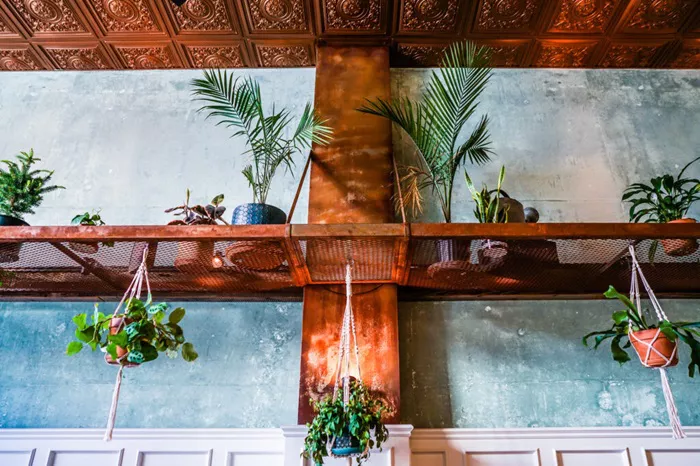Houseplants are more than just decoration; they bring warmth, air purification, and mood enhancement to your home. While many people place their plants on stands or tables, the hospitality industry is taking a different approach by placing plants in lofted spaces near the ceiling.
Elevated Plants in Hospitality
In West Hollywood, the 1 Hotel’s cocktail bar and lounge, Juniper, showcases this trend. Michelle Montalvo, the Director of Visual Design for SH Hotels and Resorts, explains that elevated plants are a creative way to merge nature with architecture. “Hanging plants add layers of softness and invite guests to look up and explore our beautifully designed spaces,” Montalvo says.
Similarly, designer Marissa Marsh brought the calming ambiance of San Francisco’s Russian Hill neighborhood to Macondray, a restaurant with 17-foot-high ceilings. She used rusted metal shelves to display plants, creating a natural counterpoint to the restaurant’s traditional white wainscoting and bronze tin tiles. “We wanted to bring a calming feeling into the space through color palette, design details, and lots of plants,” Marsh explains. The shelves are designed to accommodate the plants as they grow and overflow, contributing to a lush, tropical environment.
Choosing and Caring for Elevated Plants
To replicate this look in your own space, start by selecting the right plants and finding an elevated area, such as the top of a bookshelf or floating shelves. Montalvo prefers pothos and philodendrons, while Marsh suggests large varieties like monsteras, dracaenas, dieffenbachias, and snake plants.
Before introducing new plants, Montalvo advises researching their care requirements. “Just because a plant looks attractive doesn’t mean it’s easy to maintain,” she notes. “Start with low-maintenance plants and establish a care routine before moving on to more exotic varieties.”
Ensuring Proper Light and Care
A common concern with elevated plants is their access to natural light. Montalvo recommends installing discreet grow lights to ensure that plants receive adequate illumination. These lights, which can be found online, are on timers to provide necessary nutrients in low-light areas. Additionally, she suggests wiping down leaves and dusting surfaces to improve plant health. Regular trimming of dead leaves and avoiding overwatering are also important for plant care.
Final Tips
If you’re considering adding many plants to your space, inspect any adopted plants for pests before bringing them in. “Once you get an infestation, it can be nearly impossible to get rid of,” Marsh warns. With careful selection and maintenance, elevated plants can transform your home into a vibrant, tropical oasis.


